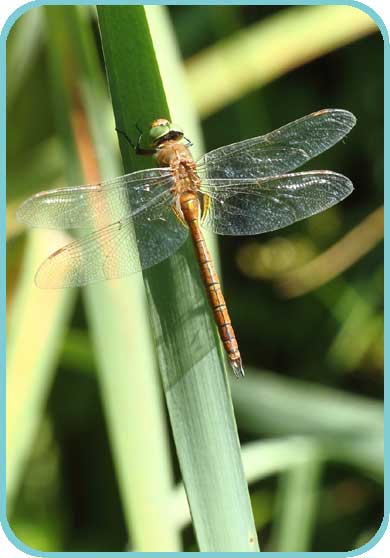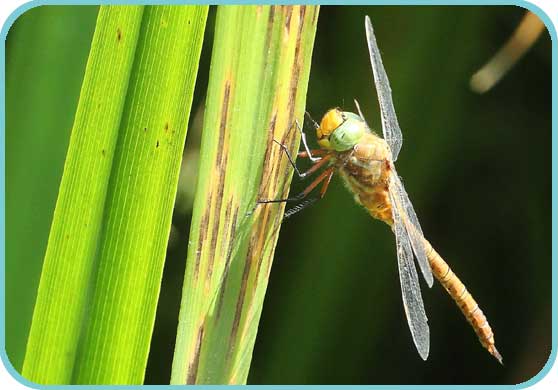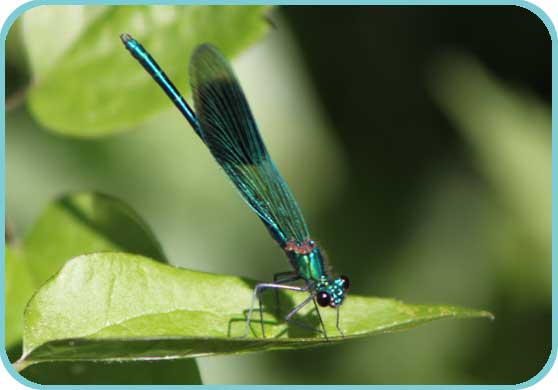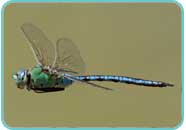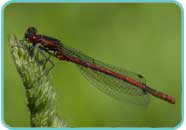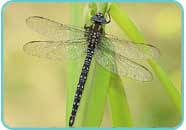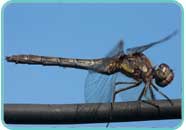Westbere Reserve - Dragonflies |
Norfolk Hawker Dragonfly breeds at Westbere
There are some very positive signs that all the hard work of our members
and the dedicated volunteer helpers over the years, since we purchased
the Westbere site, are showing results.
In the last few days there have been reports of a Norfolk Hawker Dragonfly
(Aeshna isosceles) being seen on our Reserve at Westbere. This is quite
exiting, as there are only three previous records for this species in
the County ever. It does, however, get better, as today three were seen,
probably two males and a female. They were observed by several people
mating and the female was seen laying eggs. The view seems to be that
they may have bred before, unobserved, in the area, and these insects
are the first emergent as adults. Now it could be coincidence, however
this species does seem to require clear water & stable water levels
in order to breed. This is something which we have created with our reed
bed management over the past few years.
The reserve is well known as something of a hot spot for Odonata by Kentish enthusiasts, with healthy colonies, of the uncommon to the County, Scarce Chaser and Variable Damselfly, plus an excellent variety of the more frequent species.
17 other species of dragonfly have been recorded at Westbere.
Banded Demoiselle - Calopteryx splendens
Emerald Damselfly - Lestes sponsa
Large Red Damselfly -Pyrrhosoma nymphula
Red-eyed Damselfly - Erythromma najas
Azure Damselfly - Coenagrion puella
Variable Damselfly - C. pulchellum
Common Blue Damselfly - Enallagma cyathigerum
Blue-tailed Damselfly - Ischnura elegans
Migrant Hawker - Aeshna mixta
Southern Hawker - A. cyanaea
Brown Hawker - A. grandis
Emperor Dragonfly - Anax imperator
Hairy Dragonfly - Brachytron pratense
Scarce Chaser - Libellula fulva
Black-tailed Skimmer - Orthetrum cancellatum
Common Darter - Sympetrum striolatum
Ruddy Darter - Sympetrum sanguineum
Data taken from Dragonflies of Kent: An Account of Their Biology, History
and Distribution by Gill Brook & John Brook, pub. Kent Field Club
2010

